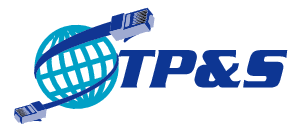Microsoft Loosens Windows 11 Install Requirements: TPM 2.0 No Longer Mandatory
In a significant shift, Microsoft has announced changes to the system requirements for installing Windows 11. Originally, the company mandated stringent hardware prerequisites, including TPM (Trusted Platform Module) 2.0, Secure Boot, and specific CPU models. These requirements caused controversy and frustration among users with otherwise capable hardware that fell short of compliance. Now, Microsoft is taking a more inclusive approach by relaxing the TPM 2.0 requirement, potentially opening the door for a broader range of devices to adopt Windows 11.
The Initial Backlash
When Windows 11 was unveiled in 2021, its system requirements generated widespread criticism. The emphasis on TPM 2.0, a hardware-based security feature, was particularly contentious. Many users discovered that their PCs, despite being relatively new, did not include TPM 2.0 support or had it disabled by default in the BIOS. The exclusion of older but still functional CPUs further alienated a significant portion of the user base.
While Microsoft argued that these requirements were necessary to enhance security and deliver a modern computing experience, the stringent standards left many devices incompatible with Windows 11, leading to complaints and workarounds circulating online.
Easing the Requirements
Microsoft’s decision to relax the TPM 2.0 requirement is part of an effort to address these concerns and make Windows 11 accessible to more users. While TPM 2.0 was intended to bolster security through hardware-based encryption and secure key management, the company now acknowledges that its strict enforcement may have been too restrictive.
Under the new guidelines, devices without TPM 2.0 can still install Windows 11, though certain features dependent on TPM’s security capabilities may not function. This change aligns with feedback from users, developers, and IT administrators who sought a balance between security and usability.
Implications for Users
The relaxed requirements significantly expand the range of devices eligible to run Windows 11. Users with older systems no longer need to resort to unofficial bypass methods, reducing the risk of unsupported configurations. This change also benefits businesses and educational institutions with large fleets of devices that previously fell outside Windows 11’s compatibility list.
However, Microsoft continues to emphasize that TPM 2.0 and Secure Boot offer enhanced security protections. For users who prioritize cybersecurity, enabling these features where possible remains a best practice.
A More Inclusive Future
Microsoft’s move to ease Windows 11 installation requirements demonstrates a willingness to adapt to user feedback and market realities. By lowering the barriers to adoption, the company not only expands its user base but also reaffirms its commitment to making modern computing accessible to a wider audience.
As technology continues to evolve, balancing innovation with inclusivity remains a challenge for software developers. Microsoft’s decision to relax its requirements serves as a reminder that listening to users and adapting accordingly is key to maintaining trust and relevance in a competitive landscape.

